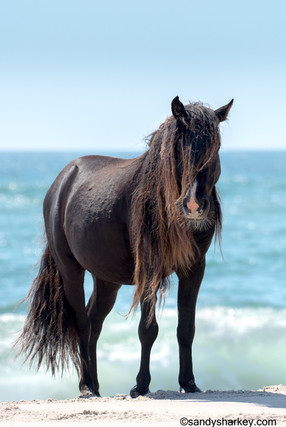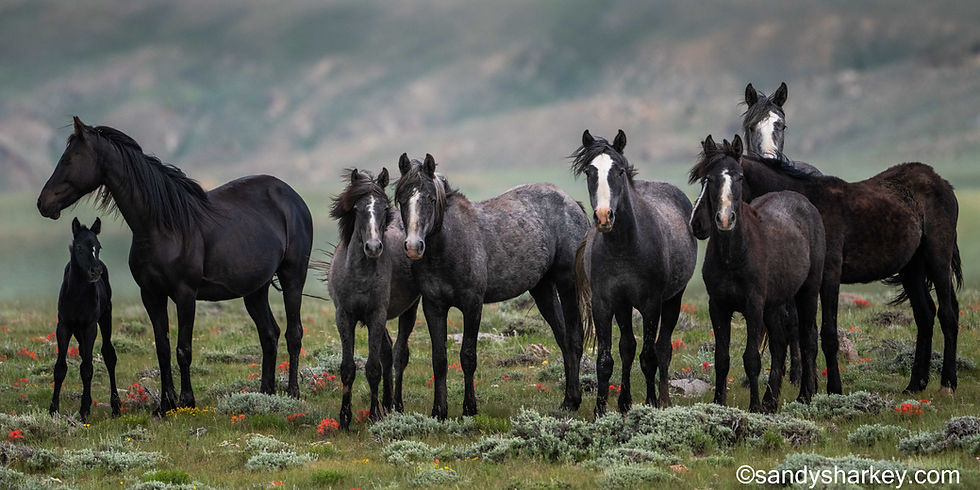- Robin Black

- Dec 11
- 4 min read
Wild burros have roamed the American West for centuries, often misunderstood and undervalued. Yet, these hardy equines play a vital role in maintaining the balance of this unique ecosystem. Advocates for wild horses and burros emphasize the importance of keeping these animals wild, not only for their own survival but for the health of the environment they inhabit. This article explores the top five reasons why wild burros need to remain wild, highlighting their ecological contributions and the broader conservation efforts that support them.

1. Wild Burros Help Maintain Plant Diversity
Wild burros graze selectively, which helps control the growth of certain invasive plant species. Their feeding habits promote a diverse plant community by preventing any one species from dominating the landscape. This selective grazing supports a variety of native plants, which in turn provides food and habitat for other wildlife.
For example, in areas where wild burros are present, native grasses and shrubs tend to flourish more than in regions where burros have been removed. This diversity is crucial for sustaining pollinators, small mammals, and birds that rely on a range of plants for survival.
2. They Support Water Access for Multiple Species
Wild burros are known as natural well-diggers. They use their hooves to dig into dry stream beds and arid soil, creating water holes that collect rainwater and groundwater. These water sources become critical for vertebrate species, including birds, reptiles, and mammals, especially during dry seasons.
By maintaining access to water in harsh environments, wild burros indirectly support the survival of many other species. This behavior highlights their role as ecosystem engineers, shaping the landscape in ways that benefit a broad range of animals.
Dr. Erick J. Lundgren is one of the top experts in the world on wild horse and burro ecology, with two peer-reviewed papers published in the highly prestigious journal Science. Dr. Lundgren and a team of researchers "detected 59 vertebrate species at equid wells, of which 57 were recorded drinking." In addition, the"results suggest that equids, even those that are introduced or feral, are able to buffer water availability, which may increase resilience to ongoing human-caused aridification."
3. Wild Burros Contribute to Soil Health
The movement and grazing patterns of wild burros help aerate the soil and distribute seeds across large areas. Their hooves break up compacted soil, allowing water to penetrate more easily and encouraging plant growth. Additionally, their droppings act as natural fertilizer, enriching the soil with nutrients.
By grazing on grasses, shrubs, and other plants, they contribute to the overall health of the landscape, preventing overgrowth and allowing for a diverse range of flora to thrive. This grazing behavior can stimulate new plant growth, benefiting other wildlife species that rely on a healthy and varied ecosystem. Moreover, wild burros are known to create pathways through dense vegetation, which can facilitate movement for other animals and promote biodiversity.
Healthy soil supports robust plant communities, which are essential for preventing erosion and maintaining the overall stability of the ecosystem. This natural process is a key reason why conservation efforts focus on preserving wild burro populations.

4. They Provide a Living Link to the Region’s History
According to Conservation Scientist, Nicole Hayes, in a recent article by American Wild Horse Conservation, "Wild burros are a fascinating and often misunderstood part of the American West. These descendants of African and Middle Eastern donkeys were brought to North America by Spanish colonists in the 1500s and have since adapted to the harsh landscapes of the American Southwest. Far from being a burden on the environment, wild burros play a unique and essential ecological role, embodying resilience and contributing to the health of desert ecosystems."
Historically, these animals were utilized for various purposes, including transportation and labor, particularly in mining operations and agricultural settings. However, as their practical utility diminished with the advent of modern machinery and transportation methods, many burros were left to roam freely, leading to the establishment of wild populations across the region.
Today, these wild burros are often seen wandering through the deserts and canyons, embodying a spirit of independence and tenacity. Far from being a burden on the environment, wild burros actually play a unique and essential ecological role within their habitats.
Equine advocacy groups emphasize that wild burros are not just animals but symbols of resilience and freedom. Their continued presence enriches the cultural landscape and offers educational opportunities for communities and visitors.
5. Conservation of Wild Burros Supports Broader Ecosystem Health
Conservation efforts are increasingly recognizing the importance of protecting wild burros, not only for their historical and cultural significance but also for their role in maintaining the ecological integrity of the American Southwest. \
Wild burros are more than just survivors of a tough environment. They are essential contributors to the health and diversity of the American West ecosystem. Their role as natural well-diggers, selective grazers, and soil enhancers supports a wide range of species and helps maintain the balance of this fragile landscape.

Wild Burros Are Essential for the American West Ecosystem
In conclusion, wild burros are more than just a remnant of colonial history; they are resilient survivors that embody the spirit of the American West. Their contributions to desert ecosystems are invaluable, and understanding their role can foster a greater appreciation for these remarkable animals and the unique environments they inhabit.
For more information about how wild burros positively impact arid ecosystems, take a moment to watch American Wild Horse Conservation's fascinating video with Dr. Erick Lundgren, a leading global authority on wild horse and burro ecology. His understanding of the role wild horses and burros play in desert ecosystems is vital not only for equids but also for comprehending and conserving the natural ecosystems they inhabit.
Help raise awareness by sharing this article and video!














































